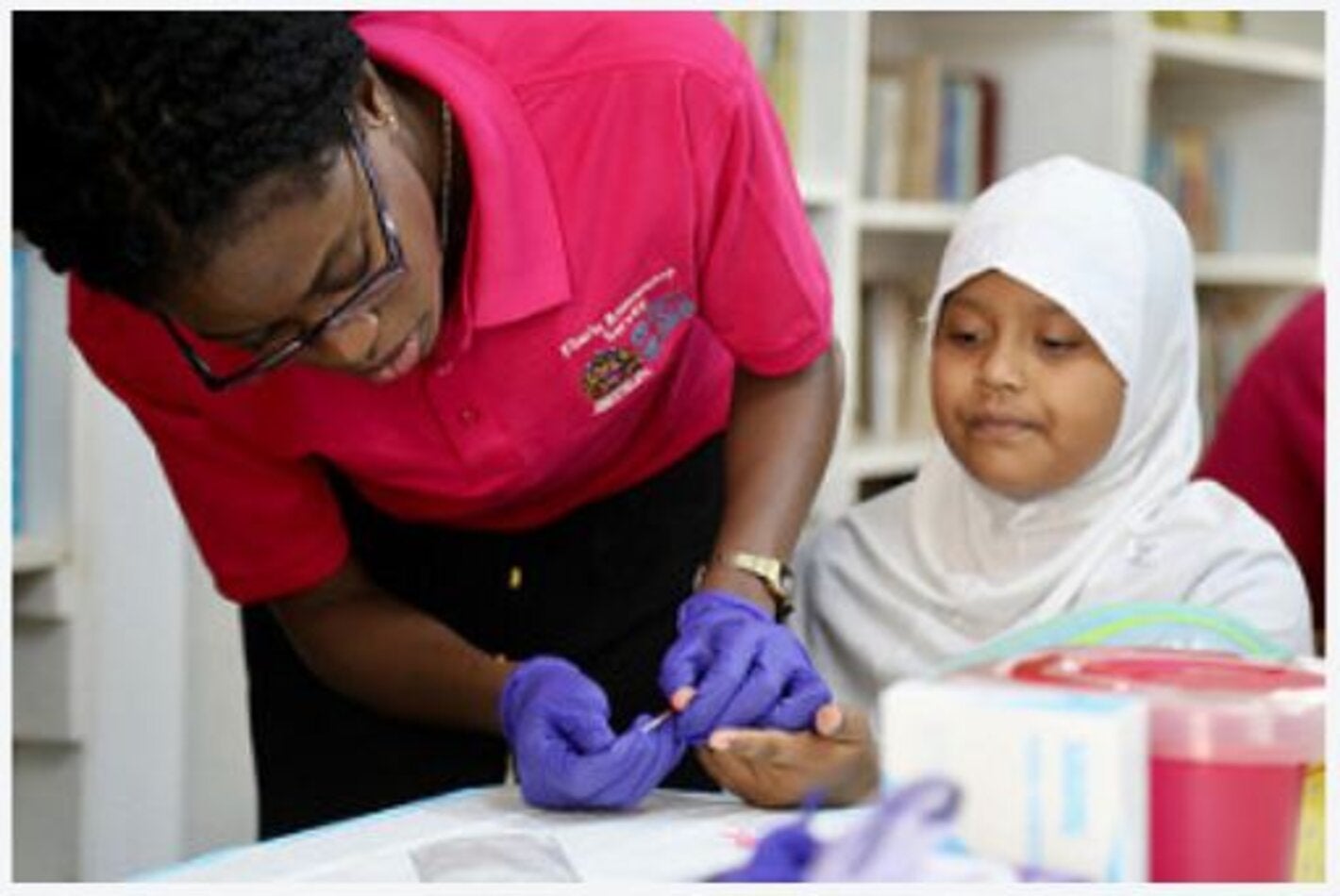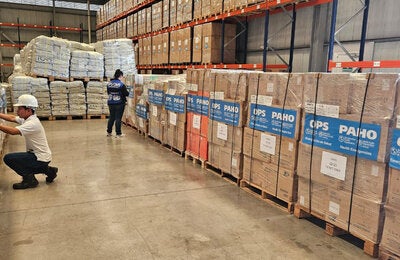
Lymphatic filariasis (LF) is a mosquito-transmitted disease caused by parasitic worms that damage the lymphatic system, leading to chronic disabling consequences such as lymphoedema, hydrocele and elephantiasis. The Global Programme to Eliminate Lymphatic Filariasis (GPELF) established by WHO aims to stop the spread of infection and alleviate suffering among patients. WHO recommends mass drug administration (MDA) and morbidity management and disability prevention (MMDP) to achieve these goals. Guyana is one of only four countries in the Region of the Americas where LF, caused by Wuchereria bancrofti, is a public health problem. To stop the spread of the infection, the endemic areas of the country must be mapped and if the antigenemia level is ≥2%, the entire at-risk population of each Implementation Unit must be treated.
Based on the results of a survey conducted in 2001, Guyana is implementing MDA in four out of the 10 regions with highest endemicity. Nevertheless, to achieve the elimination goal, the country must treat 100% of its endemic areas. To move towards the elimination goal, a remapping survey will be implemented this year in Regions I, II, VI, VII, VII and IX to decide if any subunit of them, must conduct a MDA. This survey will also characterize the epidemiological scenarios of malaria and lymphatic filariasis, using Multiplex Bead Assay (MBA) antigens.
A workshop was held in Guyana from September 3rd to 7th to train the teams on the concepts, tools and procedures of the survey. The training was supported by international consultants of the CDC, Tropical Data and PAHO/HQ. It combined presentations and practical exercises to randomly select the target population, ensure appropriate information and comprehension of the consent form, take blood samples and interpret results of the Alere Filariasis Test Strip (FTS), collecting, packaging and transportation of Dried Blood Samples (DBS), data entry and management using mobile phones and supervision tools. A pilot test was implemented in a school of Georgetown to ensure that all the instructions and forms are easy to understand and prevent problems that could arise during the field work.
Fifty three participants attended the training, including last year medical technologists of the University of Guyana. Based on the performance of each participant and the workflow of data collection, n=42 were selected to will compose 10 field teams as follows: 1) Team leader, 2) Laboratory A, 3) Laboratory B and 4) Data Collector. Two of the participants will be charge of data management using a mobile platform developed by Tropical Data.
The implementation of this survey requires strong communication and inter sectoral coordination Considering the context of these six regions, representatives of Indigenous people shared information about the characteristics of the population living in these regions, precautions and recommendations to prepare and conduct the field work. The National team of the Ministry of Health and international consultants from CDC, TD and PAHO discussed the key communicational strategies with Mr. Terrence Esseboom (Head of Public Relations and Health Promotion Unit of the Ministry of Health) and representatives of the Ministry of Education.
“The results of this survey will provide the information needed to identify the Implementation Units and make decisions to achieve 100% of geographic coverage in Guyana. This training is also an opportunity to strengthen our country’s capacities to monitor infection levels, evaluate the impact of the interventions and provide the epidemiological evidence needed to validate the elimination of LF in Guyana ", said Dr. Horace Cox, head of Vector Control Services of Ministry of Public Health in Guyana.



